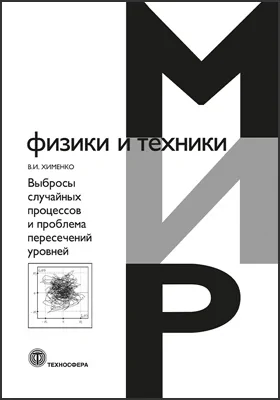
Кристаллическое поле как инструмент исследования гибридизационного взаимодействия
Здесь можно купить книгу "Кристаллическое поле как инструмент исследования гибридизационного взаимодействия" в печатном или электронном виде. Также, Вы можете прочесть аннотацию, цитаты и содержание, ознакомиться и оставить отзывы (комментарии) об этой книге.
Место издания: Москва, Берлин
ISBN: 978-5-4475-5665-5
Страниц: 48
Артикул: 17075
Краткая аннотация книги "Кристаллическое поле как инструмент исследования гибридизационного взаимодействия"
Автор книги – Андрей Юрьевич Музычка, кандидат физико-математических наук, доцент кафедры физики Московского государственного машиностроительного университета. Книга содержит описание истории и методов исследования кристаллического поля, обзор экспериментальных работ по определению КП в соединениях РЗЭ с гибридизацией, анализ сложных моментов, возникавших в процессе изучения КП.
Содержание книги "Кристаллическое поле как инструмент исследования гибридизационного взаимодействия "
Теоретическое введение
Исследование КП в соединениях изоструктурного ряда RT2Si2
Заключение
Список литературы
Все отзывы о книге Кристаллическое поле как инструмент исследования гибридизационного взаимодействия
Отрывок из книги Кристаллическое поле как инструмент исследования гибридизационного взаимодействия
arbitrary small antiferromagnetic constant of the k-f exchange interaction, JK, the ground state o f the system of L M M + conduction electrons represents a non-magnetic singlet (for example, [13]). The renormalzation group method was the most powerful tool up to 1980 when, using the Bethe-Young approach, the exact diagonalization o f the Kondo Hamiltonian [14], and then of the Anderson Hamiltonian [15], was obtained. The above-mentioned numerical methods allow for the exact computation of all equilibrium and thermodynamic characteristics of the Anderson model, but they fail in the description o f dynamic features such as resistivity, thermal emf, and dynamic susceptibilities. On the other hand, traditional methods of perturbation theory with respect to the parameter Г also do not work here because they result in logarithmic divergences at low temperatures [16]. A non-trivial way out was suggested by Anderson [17], and consisted in an expansion with respect to the parameter l/N, where N is the degeneracy o f the localized state, i.e. the state o f the paramagnetic ion before the hybridization has been "switched on". The approximation o f large degeneracy N appeared to be the major direction in the development o f the Kondo-impurity theory at U —» °°. The importance of the U —» » model can easily be understood since it assumes the existence of only one electron in the /-shell o f the REE, and a large number of investigated Kondo systems are compounds based on Ce (one /-electron in the magnetic shell) or Y b (one hole). Using a large degeneracy approximation, the energy gain was computed, which the system obtains due to the admixture o f the nonmagnetic state of the non-interacting system (an empty /-level and a see of Fermi electrons) to its magnetic states (/-level is occupied), which make up the ground state of the non-interacting system, and due to the subsequent formation o f a non-magnetic singlet, which is the ground state o f the interacti...
С книгой "Кристаллическое поле как инструмент исследования гибридизационного взаимодействия" читают
Внимание!
При обнаружении неточностей или ошибок в описании книги "Кристаллическое поле как инструмент исследования гибридизационного взаимодействия (автор Андрей Музычка)", просим Вас отправить сообщение на почту help@directmedia.ru. Благодарим!
и мы свяжемся с вами в течение 15 минут
за оставленную заявку











































